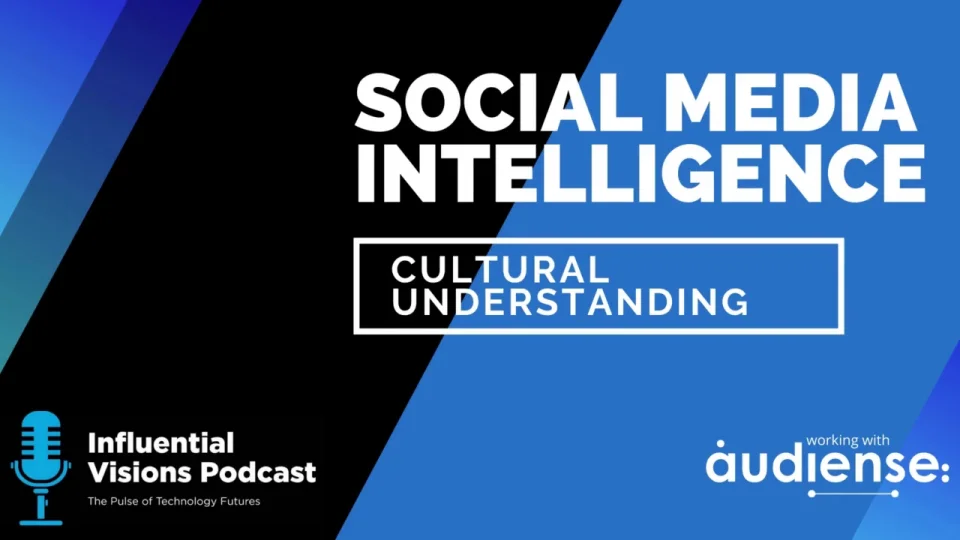Cultural understanding: A deep dive into audience passions, interests & importance of trust
Join us on the journey into industry innovations with India White, founder and chief strategist at audience intelligence agency Port Tack. India is a marketer with a strong focus on audience, innovation, and business results with over seven years of experience in technology and B2B. “Working in high-growth technology start-ups has fueled my passion for innovation in identifying, reaching, and engaging the right audience to drive business growth,” according to her LinkedIn profile.
Interviewed by Nathaniel Schooler, from The Influencer Marketing Company, for the podcast series The Secrets of Audience Intelligence, India talked about the ins and outs of audience intelligence, deeper consumer segmentation, influencer marketing, social media audience segmentation and how and where to find insights to bring you closer to your audience. Take a look at the key points India identifies...
Audience Intelligence has been around for a while, but now...
According to India, audience intelligence isn't a new approach, but a great way to dive into the data that is available today to better understand audiences beyond demographics and what we’ve been relying on for so long (broad assumptions and predetermined segments), to then understand our audiences through who they truly are.
 “I’m a female in my 30s, and I’m married, but I don’t have children. I do have a dog. But I still get ads for Pampers and stuff like that,” she said, emphasizing that we’ll be able to engage our audiences through their passions and interests if we understand the culture of the audience segments that exist in our target markets.
“I’m a female in my 30s, and I’m married, but I don’t have children. I do have a dog. But I still get ads for Pampers and stuff like that,” she said, emphasizing that we’ll be able to engage our audiences through their passions and interests if we understand the culture of the audience segments that exist in our target markets.
The marketer shared that at Port Tack they leverage audience intelligence software, such as Affinio and Audiense, to better understand audiences through their interests. “Each of those platforms have very powerful algorithms that look at audiences as a whole and have powerful segmentation or clustering abilities to group people based on similar following or interest patterns”.
Having a conversation is not the only way to better understand a communities passions and interests
India started her career almost 10 years ago at Radian6, a social media listening company where they were teaching people the importance of listening to conversations online. Her days were spent “literally calling up some of the world's biggest companies and saying, this is important, you need to be listening to what your people are saying online”.
However, over time she learnt that it's really just the vocal minority that's talking. “When you're listening to those audiences, like if a PR crisis erupts, or you're getting feedback about your company or a situation that's happening, you have to take it with a grain of salt because it is the vocal minority, it's not representative of your entire audience.”
In India’s opinion, the vast majority of an audience are lurkers, people that don't engage regularly. “They don't communicate with you, they're not commenting on your posts. They're not liking and sharing. They're not freely sharing how much they love their new Yeti mug or whatever it might be. But they are people that could be your most valuable audience segments.”
The question is how do you get to know these people that don't volunteer to be heard, don't volunteer to share their opinion? According to India, that's where audience intelligence gets really interesting because we don't need to hear someone speak to understand who they are and what they're passionate about.
“The segmentation or the clustering happens through the social graph. It's through following patterns, through what we've elected to show, as far as our interest goes, so the content piece in audience intelligence is almost layered on top, what's most interesting is the interest graph.”
Creating marketing strategies that tap into the most valuable segment
When India starts work with a new client, there's a few different things that need to be done depending on their pre-existing knowledge of their audience. If a client has a presence online, they will run an analysis of their own audience, but if it's a newer company and they're trying to learn about the audience they will be targeting once their product or service is complete, the agency will look at competitive audience analysis. “We'll look at the people and the players that already exist to see who they're targeting. Their audience is a reflection of their marketing efforts to attract those audiences or who are naturally attracted to their offering.”
According to India, that provides great insights into competitive audiences, and identifies and proves whether the assumptions are true about who the potential market might be. “That's just sort of getting started, and then we can start to identify what audiences would the low hanging fruit, the easier ones to go after.”
When speaking about high value markets (although there's a lot of definitions) India is referring to the market segments that create the most revenue and are easiest to convert as well as please. However a part of audience intelligence is looking for audience segments that have a high degree of shared interests, in turn highlighting different qualities of clusters. “Some clusters are grouped together because they're the leftover people in there, that's a very bad quality cluster. But a cluster with a high degree of shared interests is super interesting because if you layer on top the interconnectivity (how likely the people in the cluster are to know each other or follow each other), you’ll find a really neat marketing opportunity,” she pointed out.
For India, it’s all about “injecting yourself into these clusters and creating action and growing your market with in those audience segments that maybe you already have and want to grow.” In turn such an approach allows you to learn about the culture in order to create marketing strategies that penetrate and grow your presence or awareness within a specific segment.
India White shared a few case studies to illustrate the above:

These are excerpts from the interesting interview that Nat Schooler did with India White and which can be listened to in its full version here:
Image by Aziz Acharki on Unsplash






